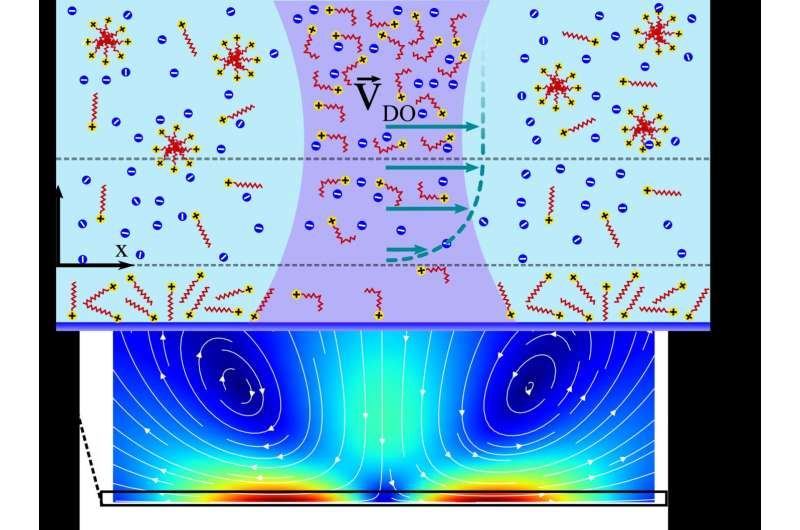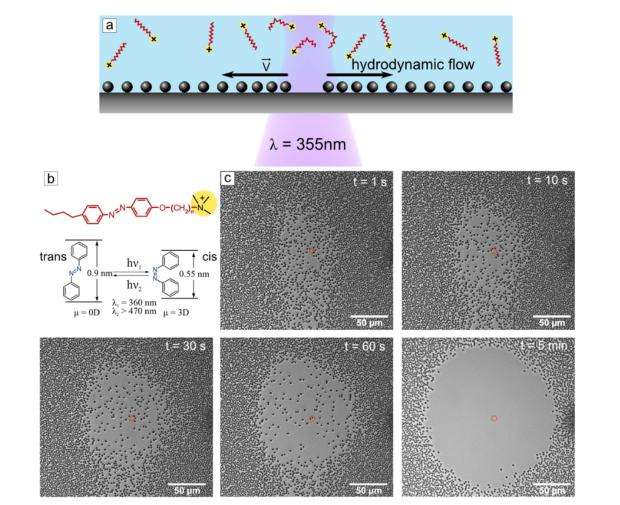Scientists 'scare away' microparticles with laser light

Olga Vinogradova, Professor at the Faculty of Physics at the Lomonosov Moscow State University, and Salim Maduar, a junior researcher of her group have suggested a new method of manipulation of microparticles at the solid-liquid interface in water based on addition of a photoresponsive surfactant. The research has been published in Scientific Reports.
Illumination of the surfactant with laser light results in a formation of fast water flows that move particles. This allows the manipulation of particles—for instance, to clean contaminants from surfaces without causing damage. It can also be used to gather or pattern a micro- and nanoparticle assembly to specific configurations and sizes at a solid-liquid interface.
The photosensitive surfactant can change its conformation under the appropriate wavelength of light. It can resemble a rod in one configuration; in another, it looks like a tick. Illuminate a solution of this surfactant reveals molecules inside the light spot changing conformation and the system generating concentration gradients of "rods" and "ticks."
Theoretical physicists from Moscow have explained that concentration gradients near a charged solid-liquid interface leads to an unusual phenomenon—a diffusio-osmotic flow, with which they can manipulate particles at a solid-liquid interface. The authors have shown that selecting the correct laser wavelength causes particles move in a desired direction to remove them from the light spot or to gather toward its center. Scientists have described the system theoretically, which has allowed them to optimize conditions providing the highest liquid velocity. It was found that diffusio-osmotic flow is very sensitive to water saltiness. In pure water, the velocity increases several times.

In spite of the fact that the initial aim of the new method was soft cleaning of surfaces, such as semiconducting crystals for microelectronics, scientists have also found several unusual applications. For instance, by moving a laser spot, the researchers could "draw" on the surface, as the laser leaves a visible trace with enhanced or decreased concentration of microparticles. In the article, the authors include photos and videos in which they drew the logo of the University of Potsdam, a "happy man" and a heart-shaped pattern, using microparticles manipulated by laterally repositioning the laser spot across the solid liquid interface.

More information: David Feldmann et al, Manipulation of small particles at solid liquid interface: light driven diffusioosmosis, Scientific Reports (2016). DOI: 10.1038/srep36443
Journal information: Scientific Reports
Provided by Lomonosov Moscow State University



















